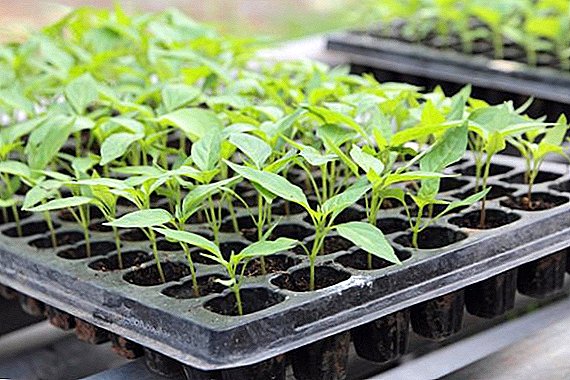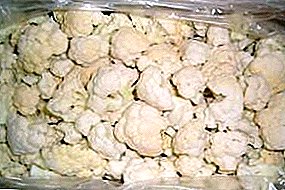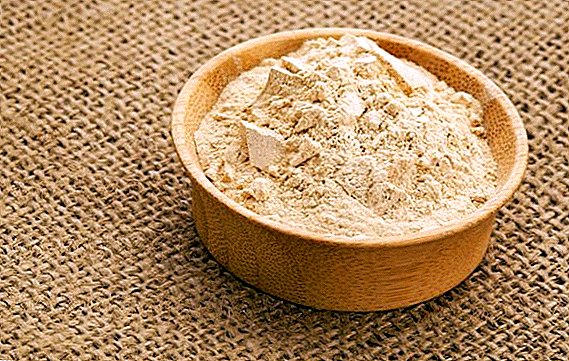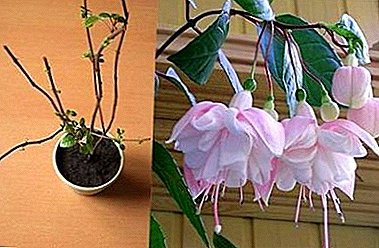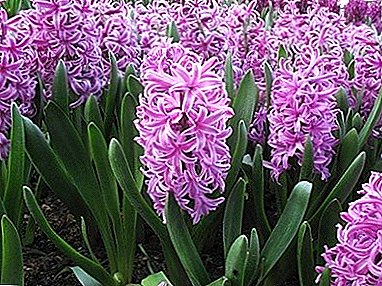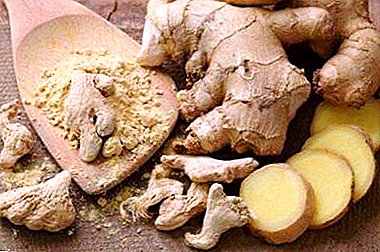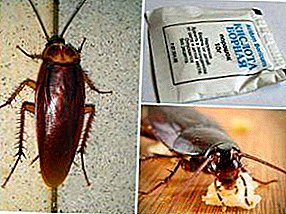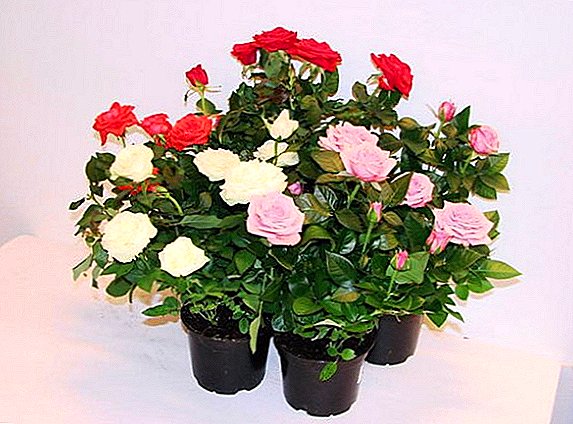 Homemade roses in a pot are no less attractive than garden ones. Recently, decorative rose bushes are an excellent alternative to outdoor plants.
Homemade roses in a pot are no less attractive than garden ones. Recently, decorative rose bushes are an excellent alternative to outdoor plants.
However, indoor roses require greater attention: you must create optimal conditions for their active growth and flowering.
Growing conditions
Since the plant is not tropical, it requires moderate conditions. So, let's see how to care for a home rose, so that this beautiful flower becomes a real decoration of your interior.
You will be interested to know which classes and groups can be divided into roses.
Air temperature and humidity
In summer, the temperature should be moderate, and in the winter season - cool. At home, miniature roses suffer not so much from elevated air temperature, but rather from overheating or drying out of the soil in the container. The optimum temperature of the content in the summer is + 20-25 ° C. However, minor daily fluctuations in temperature will only benefit the plant.
In winter, in order for the rose to rest, it is transferred to a cool place with a temperature of + 10-15 ° C.
As for the humidity of the air, then for room roses preferred moist air. In too dry an environment, bushes can become infected with parasites. Therefore, carry out regular spraying (once every two days). If the bushes are in a cool room, then they do not need frequent spraying. And to remove dust from the leaves, you can arrange a short warm shower.
Important! On a bright sunny day, try not to splash water directly on the flower. This can lead to deterioration of buds and the development of fungal diseases.
Lighting
Home rose, like most ornamental plants, is a light-loving culture. At the same time, bushes should not be overheated, so they are usually placed in the southeast or west window. In order to protect the flower from direct sunlight during the summer season, it is better to take it out to the open air (balcony or terrace). 
If this is not possible, then it is advisable to move the pot to another window or darken it.
Pot and soil
Roses can be planted in containers of all shapes and sizes. The only condition is that there should be enough space in the container so that the shrub can grow and the air circulates freely. You are required to find a compromise between beauty and functionality.
Too overgrown bushes, it is desirable to transplant in a larger container. When choosing a pot should also take into account the color of flowers and the style of the surrounding interior. By type of container, wooden or ceramic pots are the best option.
Plastic pots are allowed, but they are less reliable. The soil in them in the summer dries out quickly, which leads to a rapid wilting of the buds. It is also better to refuse clay pots - they quickly lose water.
The soil should be air and moisture permeable.
Use the following nutrient substrate:
- sod land (4 parts);
- humus (4 parts);
- sand (1 part).
The pot must have a good drainage system so that excess moisture can pass freely through the soil. However, the size of the drainage holes must be such that water does not flow out of the tank too quickly.
Care rules
Next, take a closer look at how to care for roses at home. These flowers love good watering as the soil dries out, feeding in the vegetation phase and timely pruning.
Watering
Regular watering of pink plants is especially important in summer, during flowering and growth. Drying the ground is dangerous for them. Therefore, water the flower as soon as the soil dries (especially in small containers). However, do not overdo it with watering, the soil in the pot should not turn sour.
It will be useful for you to learn about why the rose does not grow and what possible mistakes gardeners make most often.
Ornamental roses are also very sensitive to overflow, especially in autumn and winter. Therefore, with the stop of budding, reduce watering. Thus, in the question of how to water a rose in a pot, it all depends on the conditions of the microclimate.
For irrigation, use well-settled, filtered warm water.
Top dressing
Since the water evaporates in pots faster than in open ground conditions, you need to feed the earth more often. Fertilize bushes every two weeks in the spring and summer season, alternating mineral and organic nutrients. Use standard fertilizer designated for flower crops. Dilute fertilizer in water before use. 
Important! Do not forget that the flower reacts poorly to dressing on cloudy cold days. In addition, do not fertilize a newly acquired or transplanted plant for a month. It is also impossible to feed sick bushes.
Pruning
Pruning home roses is to remove yellowed, dried leaves and dried flowers during the growing season. Thanks to timely pruning, the plant will look shaped, and budding will be early and lush. Cut flowers to the first leaf, removing weak stems.
Also, prune before hibernation, shortening the stems to a height of 10 cm. Leave 4-5 buds on each branch. Sharpened shoots can be used for breeding.
Breeding features
Roses at home are propagated by cutting. The best time for grafting is from May to September.
Almost lignified cuttings (about 10–15 cm long) are cut from a faded shoot with a secateur. Place the cuttings in clean warm water. About 3-5 buds and a few leaves should be present on the body of the cutting. The first roots appear after three weeks. Well-developed cuttings planted in the prepared fertile substrate. For planting young plants, use small containers (approximately 200-300 ml).
Learn how to grow a rose from a bouquet.
For the successful rooting of cuttings add to the soil growth stimulator "Heteroauxin". It is desirable to remove the first buds. If the planting process was performed before hibernating, the next year rapid growth and flowering are possible.
Did you know? The world's oldest rose bush grows in Germany. For nearly 1000 years, it blooms near the walls of the cathedral in Hildesheim.
The nuances of caring for flowers at different times of the year
Any amateur grower must understand that cultivating a home rose and caring for it at home at different times of the year is significantly different from caring for garden flowers. Therefore, to use your knowledge of growing plants in the open field is neat.
In the spring
In the spring, new leaves and twigs are shown near the rose. The plant begins to water more abundantly and is fed with mineral fertilizers, liquid from bird droppings or mullein.
In the spring the plant should not feel a lack of moisture or light. Sometimes in the evening the plant is sprayed with cool boiled water from a spray bottle. As soon as the bush overgrows the pot, it is surely rolled over into a larger container, trying not to disturb the roots.
After spring frosts and with the establishment of a warm night temperature, it is time to transfer the pot with a flower to fresh air (in the garden or loggia). The home plant is accustomed to the bright sun gradually. To this end, the flower is first placed in a shady corner and only after 10-14 days is transferred to the sunny area.
Summer
Summer care room rose is a regular watering, spraying, fertilizer, as well as the removal of faded parts of the plant. To the flower does not overheat in the summer heat, watch the state of the plant. It is important to notice the signs of diseases and pests.
If you notice that the bush grows quickly, and the capacity becomes too cramped, wait for the evening and load the rose into a new spacious container. If a flower located on a window is illuminated only from one side, then it naturally stretches towards the sunlight.
To guarantee uniform illumination of the flower, it is necessary to turn the pot from time to time. Through this procedure, you avoid the problems of the development of one-sided plants.
Familiarize yourself with the rules for feeding roses at different times of the year.
In the autumn
In autumn, in conditions of low night temperatures (up to 15-12 ° C), transfer the rose from the balcony to the room and place it on the window-sill of the south window. After the flowering phase, start preparing the plant for wintering: water less frequently (leave the soil dry for 1-2 days before watering) and gradually stop feeding.
Before wintering, make a standard pruning bush. Leave 5 buds on each shoot, do not remove the leaves. It is desirable to conduct pruning in the evening. If you miss the autumn pruning, then next summer the plant will bloom much later and less abundantly, the bush will have a sloppy appearance.
If you still do not cut the flower before hibernation, this event can be carried out in the spring.
In winter
In winter, the rose ceases to grow and bloom, it only sheds the remaining leaves and looks pretty sad. Winter maintenance of roses in the pot and care for the bush at home are in a rare watering and spraying. After the earth dries, the flower should be watered only after 2-3 days.
The air temperature in the room where the rose bush hibernates must not exceed + 15-17 ° C. If possible, transfer the pot to the window sill.
Important! In an ordinary apartment near the wintering bush should not be heating and electrical appliances.
In an apartment with central heating, use the following plant protection options:
- place the flower for the winter between the frames;
- do not seal the window on which the rose will hibernate in the fall;
- part of the window with a flower fence polyethylene;
- Put the container on a stand with wet pebbles or gravel and check that the stones are always wet.
Possible diseases of indoor roses
The cause of possible diseases of the decorative rose is improper care: too high air temperature, high humidity, poor ventilation in the room.
Read about how you can protect roses from disease and what next measures to use for prevention.
Miniature roses indoors can develop the following diseases:
- Leaf spot - fungal disease, manifested in the form of small dark formations on the leaves. Over time, the affected leaves turn yellow and peel off. This disease is particularly susceptible to yellow roses. Spotting occurs in conditions of high humidity. When watering the plant, try to prevent water from entering the leaves. Remove all infected leaves. In the fight against the disease, use antifungal soap or fungicides ("Topsin", "Fundazo").

Find out also about what powdery mildew is dangerous for roses and how to deal with it.
- Mealy dew. With this disease, the leaves, stems and buds are covered with white powder. Young leaves can change shape. Mealy dew usually occurs due to frequent temperature fluctuations. The fight against the disease is to remove all damaged parts of the bush and treatment with a fungicide.

Thus, the care of decorative roses does not create you a lot of trouble. Growing this plant in pots is a great way to organize your own mini flower garden.
Did you know? In medicine, rose essential oil is used to prevent and treat colds and flu, to improve sleep, and also to alleviate toothache. In addition, this charming flower has aphrodisiac properties and has a beneficial effect on the cardiovascular system. In cosmetology, rose is successfully used for making creams, lotions and legendary rose oil - it is included in almost all women's perfumery (approximately 98%).




